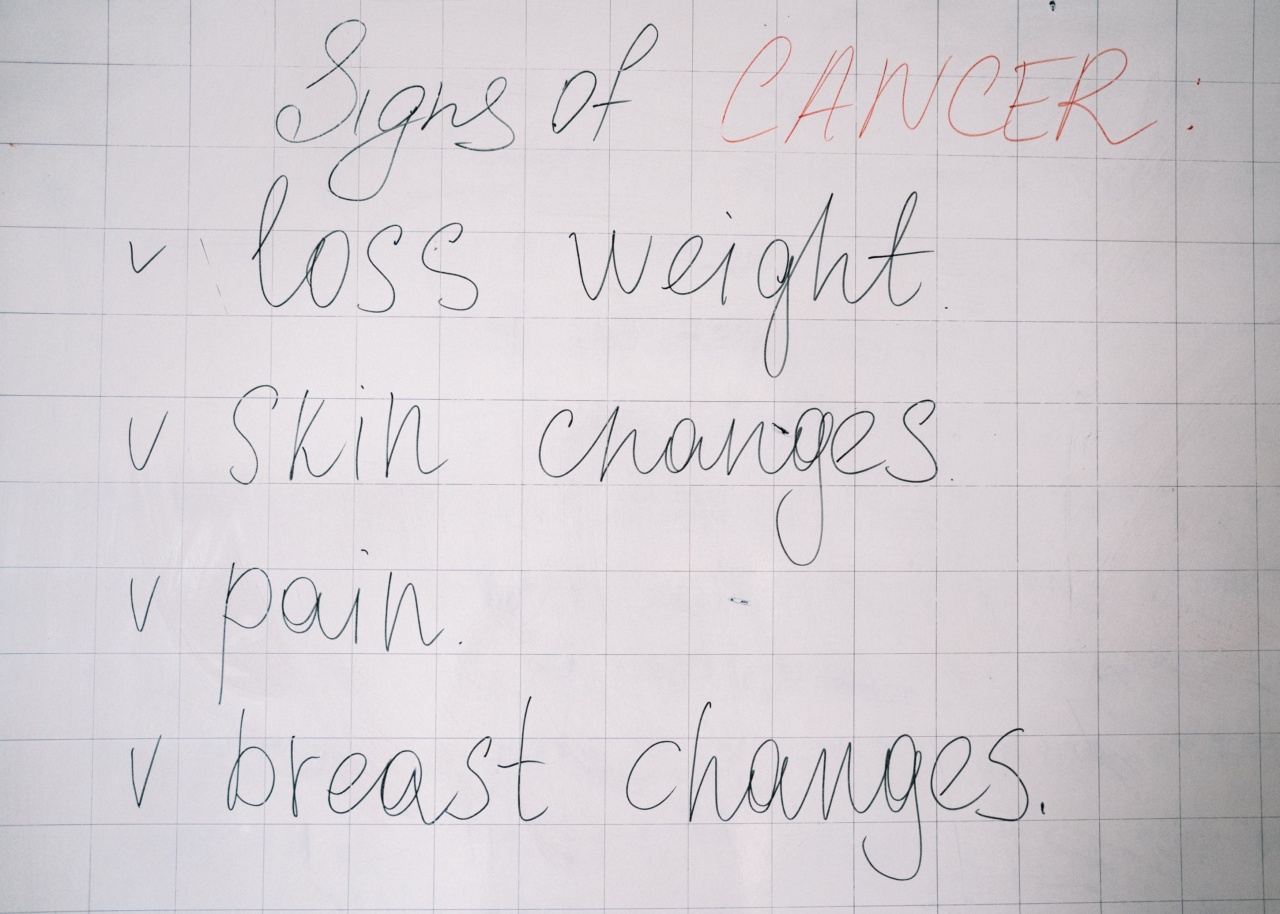Bone cancer is a rare type of cancer that begins in the bones. It can occur in any bone in the body, but it most commonly affects the long bones in the arms and legs.
Bone cancer can cause various signs and symptoms that may vary depending on the location, size, and stage of the tumor. In this article, we will discuss the common signs and symptoms of bone cancer in adults.
1. Bone Pain
The most common symptom of bone cancer is persistent bone pain. Initially, the pain might be mild and intermittent, but as the tumor grows, it can become more severe and constant. The pain may worsen at night or during physical activity.
It is important to note that bone pain can have various causes, so it is essential to consult a healthcare professional for proper evaluation and diagnosis.
2. Swelling and Tenderness
Swelling and tenderness can occur around the affected area. The tumor can cause the surrounding tissue to become inflamed and swollen. This can lead to tenderness when touched or pressure applied.
Swelling and tenderness might be more noticeable if the tumor is located near the surface of the skin.
3. Fractures and Bone Weakness
If the tumor weakens the bone structure, it can make the bone more susceptible to fractures. A bone affected by cancer may break more easily than expected, even with minimal trauma or stress.
Fractures can cause sudden and severe pain and can be a sign of underlying bone cancer.
4. Fatigue and General Weakness
Bone cancer can lead to fatigue and weakness in affected individuals. The body’s energy reserves may be depleted as the cancer progresses, leading to feelings of tiredness and overall weakness.
This symptom can be more pronounced if the cancer has spread to other parts of the body.
5. Unexplained Weight Loss
Unexplained weight loss can be a potential warning sign of various types of cancer, including bone cancer. Cancer cells can interfere with the body’s metabolism, leading to unintended weight loss.
If you have experienced significant weight loss without any changes in your diet or physical activity, it is important to consult a healthcare professional.
6. Lumps or Masses
In some cases, bone cancer can cause the formation of lumps or masses in the affected area. These lumps might be tender or painful to touch.
It is crucial to have any new growths or masses evaluated by a medical professional to determine their cause and rule out any potential malignancy.
7. Limited Range of Motion
A tumor growing near a joint can restrict the mobility and range of motion of the affected limb. This can result in difficulty or pain while performing simple everyday tasks, such as walking, bending, or lifting objects.
If you experience a sudden decrease in your joint mobility, it is important to have it examined by a healthcare provider.
8. Nerve Compression Symptoms
If a bone tumor presses against nearby nerves, it can lead to nerve compression symptoms. These symptoms may include numbness, tingling, weakness, or paralysis in the affected area.
Nerve compression can cause significant discomfort and impair functioning.
9. Fever and Night Sweats
In some cases, bone cancer may cause systemic symptoms such as fever and night sweats.
These symptoms are not specific to bone cancer and can occur in various other conditions, but if experienced alongside other bone cancer-related signs, it is important to consult a healthcare professional for further evaluation.
10. Changes in Bowel or Bladder Habits
In advanced stages of bone cancer, the tumor may affect the nearby organs or nerves, leading to changes in bowel or bladder habits. This can include changes in bowel movements, urinary frequency, or urinary incontinence.
These symptoms should be discussed with a healthcare provider to determine their cause.
If you experience any of these signs and symptoms or have concerns about bone cancer, it is essential to seek medical attention promptly. Remember that early detection and diagnosis can greatly improve the prognosis and treatment options.
























